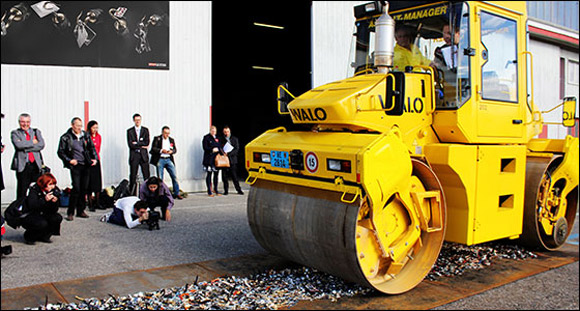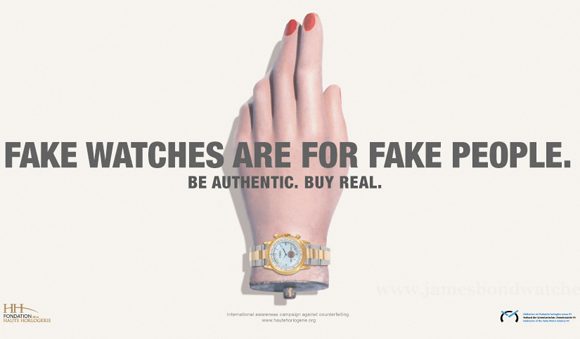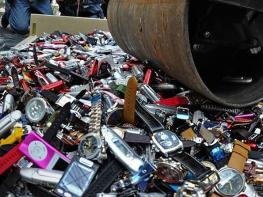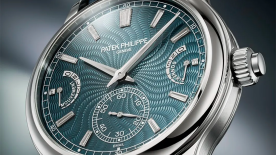Statistics can easily be contorted to support a particular argument, or, worse, misrepresented graphically to mislead an audience (as these examples from Fox News show). This is why I like to go through the raw data wherever I can, regardless of the topic, to see the real truth behind a story. It’s the reason why I read through 80 pages of the Vontobel report on the watch industry, before I formed an opinion on the outlook for 2016.
So when I read news about an OECD report on counterfeiting, I naturally did the same. The publication entitled Trade in Counterfeit and Pirated Goods: Mapping the Economic Impact is available to read online for those with the patience to scroll through all 138 pages of it.
The report values the world trade in counterfeit goods at USD 461 billion (2.5% of total world trade) for 2013 based on customs seizure statistics. Unsurprisingly, China and Hong Kong are – by far – the biggest geographical sources of these counterfeit goods. Footwear is the biggest product category found in the goods seized, which probably explains why brands such as Salvatore Ferragamo are now fitting RFID chips to their shoes that can be used to confirm their authenticity.
What is the Swiss watch industry doing to combat this?
Using a rather complicated methodology that takes into account the value of goods seized as well as the quantities, it is also little surprise that watches are the product most likely to suffer from the problem of counterfeiting. Taking the averages over 2011-2013, the industry actually achieves a “perfect” score under the OECD methodology.
One way to combat the plague of counterfeit goods is to cut demand, which countries like Switzerland do by imposing hefty fines for anyone bringing counterfeit goods into the country, whether they were acquired knowingly or unknowingly. The Federation of the Swiss Watch Industry (FH) takes the issue very seriously. In addition to training customs officials around the world to recognize fake watches, staff members from the FH prowl the halls of Baselworld in search of watches that falsely claim a Swiss origin. Interestingly, the federation noted this year that the focus of such dubious activity shifted from the national pavilions of Hall 4 to the stands of Hall 2, where action was taken against five exhibitors.
Beyond Switzerland’s borders, the federation organizes actions to seize and destroy fake watches. “On average each year we destroy around one million fake watches across all continents,” explains Jean-Daniel Pasche, President of the FH. The federation also carries out surveillance at the Hong Kong Watch and Clock Fair in September. “The FH also lobbies authorities to legislate against counterfeiting, launches public awareness campaigns in the media, exhibitions at airports and puts on displays where fake watches are destroyed by steamroller,” adds Mr Pasche.

The problem of the Internet
The Internet is a major source of counterfeit watches (over 60% of counterfeit watch seizures are from postal shipments). The FH has a dedicated team which keeps track of over 11,000 websites selling fake watches. “We manage to get thousands taken offline each year,” explains Mr Pasche. “We also block domain names in the USA, which prevents such sites from operating. We also have advertisements selling fake watches on platforms like Alibaba, Aliexpress, Paipai, Ruten, Taobao and social media such as Facebook, Youtube and Instagram taken down. We had over 600,000 such advertisements taken down in 2015.”
"The two are not mutually exclusive: we have to seize physical fakes as well as those in the virtual world."
Sometimes the individual watch brands themselves who are affected by the counterfeit watch trade work directly with the FH. “We have an anti-counterfeit group within the FH,” says Mr Pasche, “which brands join on a voluntary basis, make a financial contribution and draw up objectives jointly with us and help us with our work.”
Fake watches are for fake people
Working in collaboration with the Fondation de la Haute Horlogerie, the FH produced a provocative anti-counterfeit campaign with the tagline “Fake watches are for fake people”. But what are the more direct effects of buying a fake watch, apart from the impact on the Swiss watch industry. According to Mr Pasche, “the consumer is deceived when he or she buys a fake watch without realizing it. They will have wasted their money. Furthermore, fake watches could cause skin irritations because counterfeiters are not interested in the quality of materials used. The customer must realize that they are also supporting organized crime, exploitation of the poor (who are working for extremely low wages without any social protection) and even financing terrorism.”

Since the most recent statistics date back to 2013, could the situation have improved or worsened in the meantime? “It’s hard to tell exactly,” concludes Mr Pasche, “but I don’t think the situation has improved that fake watches continue to have a major impact on our industry.”





